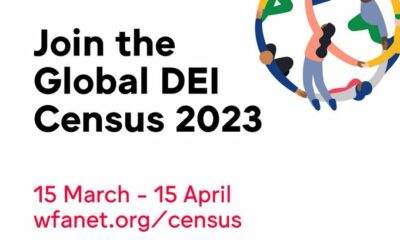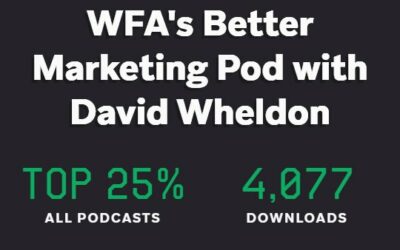by Stephanie Bouvard

The WFA headed to the Spikes Festival of Creativity in Singapore last week. For the first time we didn’t just listen to the best regional and global thinking but also actively participated.
The WFA-moderated panel addressed the key issue of how marketing professionals should approach user-generated content and whether they should embrace or ignore the trend.
It’s a critical challenge not least because brands are seeking to find a way through the clutter of a 12 hour plus daily diet of media clutter.
Consumers trust their family, friends and other customers but ultimately brands want to be trusted too.
The experts on our panel were Chris Miller, Vice President Global Brand Strategy and Innovation, Abbott; Jamshed Wadia, Head of Social Media APAC, Intel; Sameer Desai, Global Head of Consumer Healthcare Marketing, Mundipharma.
Before taking a deep dive into the subject, we asked our audience what they thought user generated content actually was. Unsurprisingly, the responses diverged from one participant to another, from one industry player to another: “it’s just YouTube videos” said one, “no it’s mainly product reviews” added another or “any content created by a consumer and made available publicly to other users via the web” was the view of a few.
Our panel reached a consensus that user generated content is, in essence, the conversation between the brand and a broad community of consumers. In marketing terms, user generated content is the result of a brand facilitating and igniting consumers to participate, discuss and to a certain extent create.
Like all elements of your marketing mix and your media strategy, a recurrent question is “and now what?” Our panel highlighted the key differentiator within the social space of brand consumer conversation lies in continuity and leverage.
A great example of this was an Intel project ran in 2012. With the rise of K-Pop, Intel collaborated with the 2NE1 Korean band to create a song supporting the launch of the Ultrabook: Make Thumb Noise. Getting fans around the world excited about its release. Consumers around the globe uploaded videos of themselves sharing their reaction to the 2NE1 Make Thumb Noise song but the cherry on the cake was they all signed off their videos by humming the Intel jingle. For Intel this was taking brand identity and recognition to an entirely new level, a true game changer.
Another example was the award-winning Betadine Mundipharma gargle campaign, which ran earlier this year in Malaysia. Riding the wave of humour via an online video produced by a local stand-up comedian, many local celebs and wannabe humourists created their own videos in response to this Betadine gargle clip. Mundipharma also received testimonials from consumers thanking them for providing genuine tips to sore throat relief. These reactions were completely unprompted and unexpected and what was key for Mundipharma was authenticity and humility. These attitudes helped lift sales by 215%.
Another example brought to us by Chris from earlier in his career was that of the Taco Bell Doritos Go Locos launch campaign, which was the result of the convergence of social media and digital out-of-home, all tied back to an online contest. In real-time tweets were shown on two digital billboards, in Times Square New York and on Sunset Blvd L.A with a streaming camera allowing the action on each billboard to be viewable on the Taco Bell website. A further set of cameras took pictures of Tweets on the billboards and these were then sent back to individual users and posted to an online gallery. The positive user response of the product launch campaign yet again demonstrated the power of providing a platform for users to express themselves but also in creating a value exchange system that rewards consumers for their participation.
The core recommendations from the WFA and our panel were:
- Brands don’t have to embrace user generated content but you certainly can’t ignore it
- Like advertising UGC requires a strategy and a plan
- Listen, Listen, Listen
- Be authentic, don’t fake it
- Stick to your core brand identity
- Adopt a Buddhist mindset and adapt the conversation and dialogue as you go along
While UGC should definitely not dictate your brand identity and strategy, it surely cannot be ignored. If the best insights drive the best business results then user generated content when managed appropriately will provide the greatest insights.
Source: http://www.wfanet.org/blog/leadership/putting-user-generated-content-brand-marketing/



